|
During the eighteenth century, riverfront property in Dutchess County was prized primarily for its good agricultural soils and ready access to the river and Post Road. The farms were initially purchased by wealthy patent owners and New York City merchants, most of whom sold or leased to families who established subsistence farms of modest size and style. Despite the utilitarian uses, some of the first-generation landowners in the area around Hyde Park appear to have appreciated aesthetic values in the landscape. 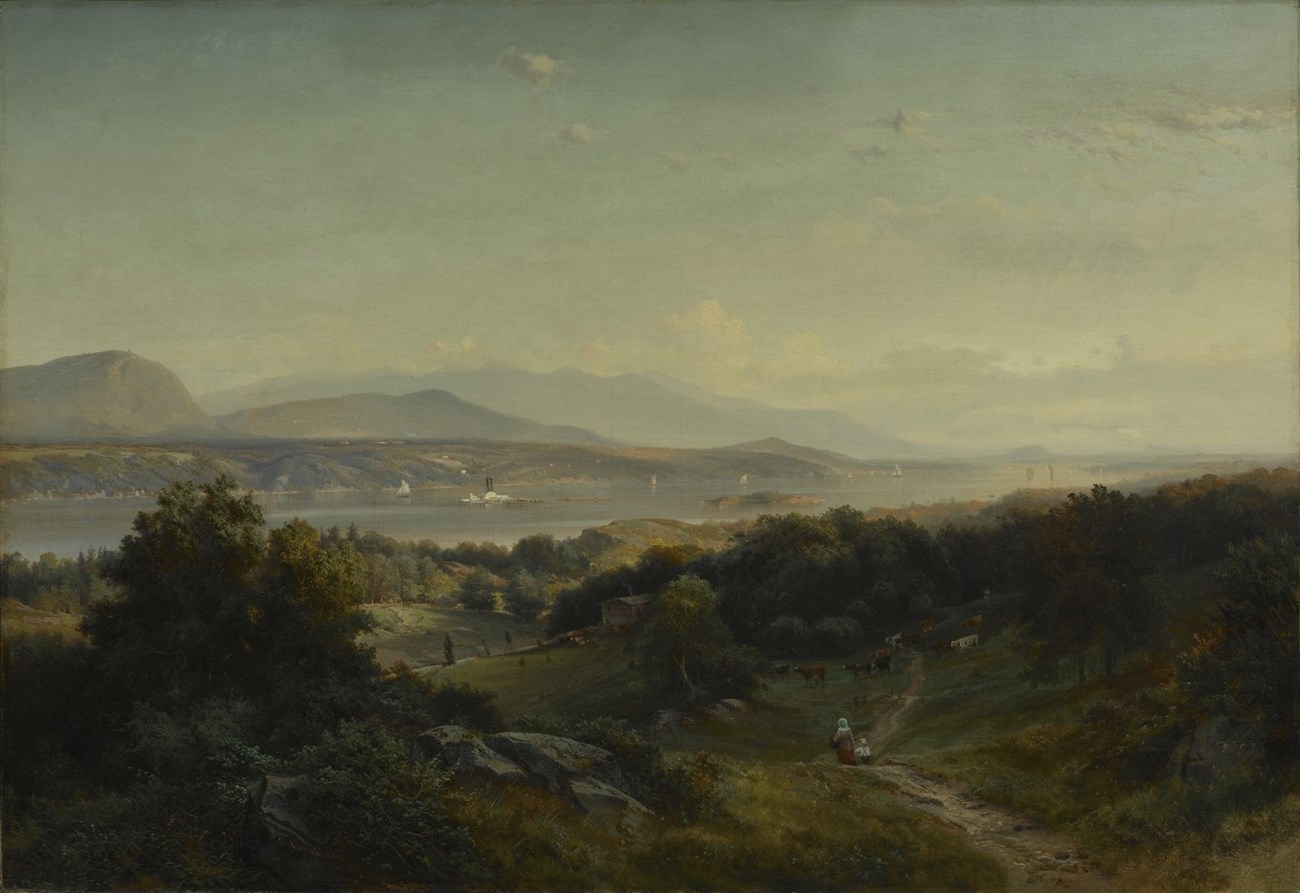
Landscape, Hyde Park, New York, 1859, by Johann Hermann Carmiencke (1810-1867), oil on canvas. Courtesy Brooklyn Museum of Art. By the time of the Civil War, many of the riverfront farms were occupied as seasonal country residences by wealthy people from New York City. Already in 1842, a gazetteer published that the Town of Hyde Park featured “much good land, along the bank of the Hudson, which bounds it in the west, where are situated a number of delightful residences, overlooking the river.” The natural beauty of the river estates, with their rural settings and views across the Hudson River was the primary attraction to city dwellers, who were in easy reach by river or road, and after the 1830s, by railroad. The picturesque attractions of the region were popularized in American culture during the early nineteenth century by the landscape paintings of the Hudson River School artists, who often depicted rural landscapes not unlike that of England, but set against the wild character of forests and mountains that they considered uniquely American. The combination of the two picturesque qualities—the softness of the rural countryside and the roughness of the forested mountains—became a hallmark of landscape design during the mid-nineteenth century. 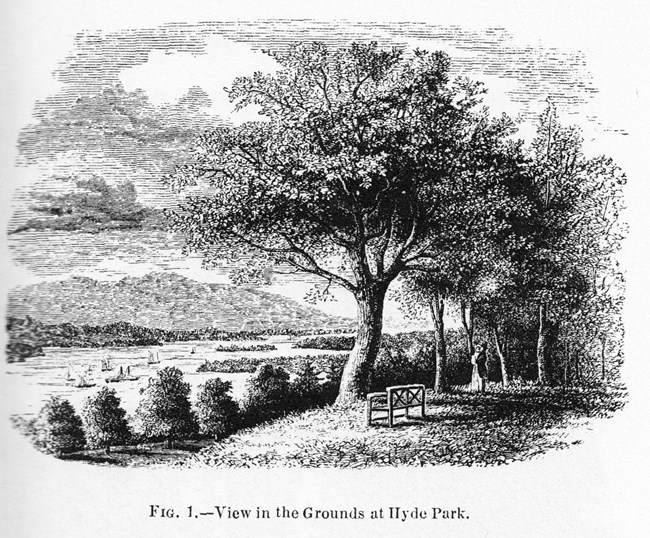
"View in the Grounds at Hyde Park," in A. J. Downing, A Treatise on the Theory and Practice of Landscape Gardening (Sixth edition, 1859). Alexander Jackson Downing, the country’s foremost landscape designer of the time and a Hudson Valley native from nearby Newburgh, popularized this and other picturesque landscapes in his 1841 book, A Treatise on the Theory and Practice of Landscape Gardening. Downing extolled the virtues of the Hudson Valley, with its natural scenery and growing number of country residences: There is no part of the Union where the taste in Landscape Gardening is so far advanced, as on the middle portion of the Hudson. The natural scenery is of the finest character, and places but a mile or two apart often possess, from the constantly varying forms of the water, shores, and distant hills, widely different kinds of home landscape and distant view. Standing in the grounds of some of the finest of these seats, the eye beholds only the soft foreground of smooth lawn, the rich groups of trees shutting out all neighboring tracts, the lake-like expanse of water, and, closing the distance, a fine range of wooded mountain. A residence here of but a hundred acres, so fortunately are these disposed by nature, seems to appropriate the whole scenery round, and to be a thousand in extent.... At the present time, our handsome villa residences are becoming every day more numerous. In the decade following Downing’s treatise, most of the early farm landscapes bordering the Hudson River were rebuilt into fashionable country places set in picturesque landscapes organized around Italianate and Gothic Revival–style mansions. In Dutchess County, the mansions and pleasure grounds were typically on the west or river side of the road, the part of the estate often called the park, while the farm component was most often on the upland or east side of the road. One of the most renowned examples picturesque pleasure grounds in America was Hyde Park, the present Vanderbilt Mansion National Historic Site, as it was redesigned between 1828 and 1835 by the Belgian landscape gardener Andre Parmentier. 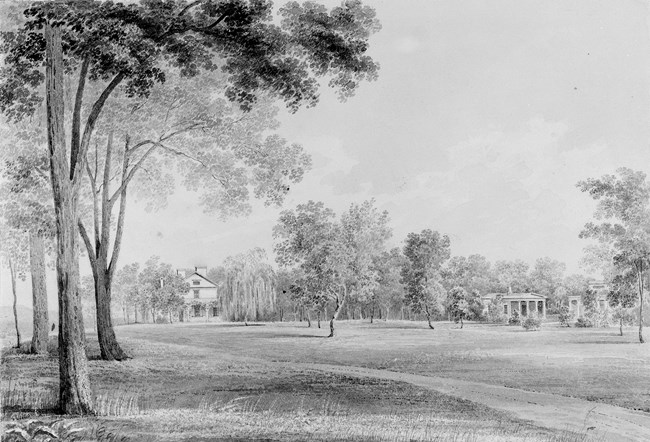
Thomas Kelah Wharton, “View of the David Hosack Estate, Hyde Park, New York, from the South” in the Hosack Album, c. 1832. Metropolitan Museum of Art. David Hosack purchased Hyde Park from the heirs of its former owner Samuel Bard in 1828. Hosack’s ownership of the 700-acre property spanned only seven years, yet this period was one of the most influential with respect to the overall layout of the estate grounds. Hosack was an accomplished physician as well as a distinguished botanist, and founder of the Elgin Botanic Garden in New York City, the first botanic garden in the United States. Hosack invested in numerous landscape improvements and Hyde Park soon became “an obligatory stopping point on the Hudson.” Hosack consulted with the landscape gardener Andre Parmentier to lay out the grounds Hyde Park. Parmentier came from a family of French and Belgian horticulturists. Immigrating to the United States in 1824, he established a nursery in Brooklyn and was the first in this country to call himself a landscape gardener. Parmentier brought with him to America the principles of picturesque landscape design that had become popular in Europe. These principles were first developed at the grand country estates in England in the eighteenth century, and by the late 1820s, the style had come to the United States, strongly influencing the design of private estates. Parmentier was one of the earliest practitioners of picturesque landscape design in America, and although the number of landscapes he designed in the country appears to be rather modest, he had a discernible impact on the practice of landscape design. In his book, A Treatise on the Theory and Practice of Landscape Gardening, Andrew Jackson Downing states, “We consider Mr. Parmenter’s labors as having effected directly far more for landscape gardening in America than any other individual whatever.” By means of a network of walks and drives laid out in relation to the natural terrain of Hosack’s property, Parmentier created a series of vistas, with occasional seats and neoclassical pavilions positioned strategically to serve both as ornaments and as vantage points. Visitors to Hyde Park noted with approval the “almost endless variety of venerable forest trees” clustered in groups along the ridge and dotted throughout the undulating ground that sloped down to the water. 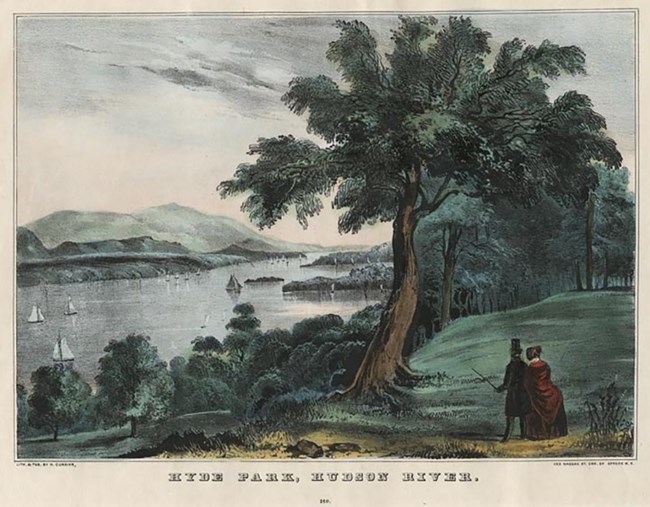
Nathaniel Currier and James Merritt Ives, Hyde Park, Hudson River, c. 1838–56. When Hosack died in 1835, Hyde Park passed to his wife and children, who retained the property for five additional years. They sold the property In 1840, to John Jacob Astor who purchased it as a gift for his daughter Dorothea Astor and her husband Walter Langdon. The Langdon’s were occasional residents at Hyde Park and spent extended periods away from the estate, sometimes staying years at a time in Europe. Improvements to the estate were apparently made sporadically when the Langdon’s were in residence. Their absentee ownership ensured the preservation of the major early nineteenth-century design. For more than fifty years, the Langdons, whether by design or default, preserved the Hosack landscape, so that it passed to the Vanderbilts fully mature and only slightly altered. The enduring quality of the property was reinforced by the mature specimen trees planted by earlier owners, which by this time framed the core of the estate, preserving the picturesque style of the landscape. During the Vanderbilt ownership, with only two exceptions, every structure on the property was replaced. Crum Elbow Creek was partially reshaped, the formal gardens redesigned, and the drives were partially reconfigured. Most of this extensive work, however, retained the form and content of the landscape that the Vanderbilts had inherited from the Langdons, Dr. Hosack, and even Samuel Bard. In general, the Vanderbilts erected new structures as replacements on the same locations as previous ones. Gardens and boundary plantations were developed and some new plantings were undertaken, but many elements of the original circulation, the mature trees, and vistas were maintained. Today, Hyde Park reflects centuries old improvements and preserves the qualities of the picturesque landscape designed and celebrated in the early nineteenth century. 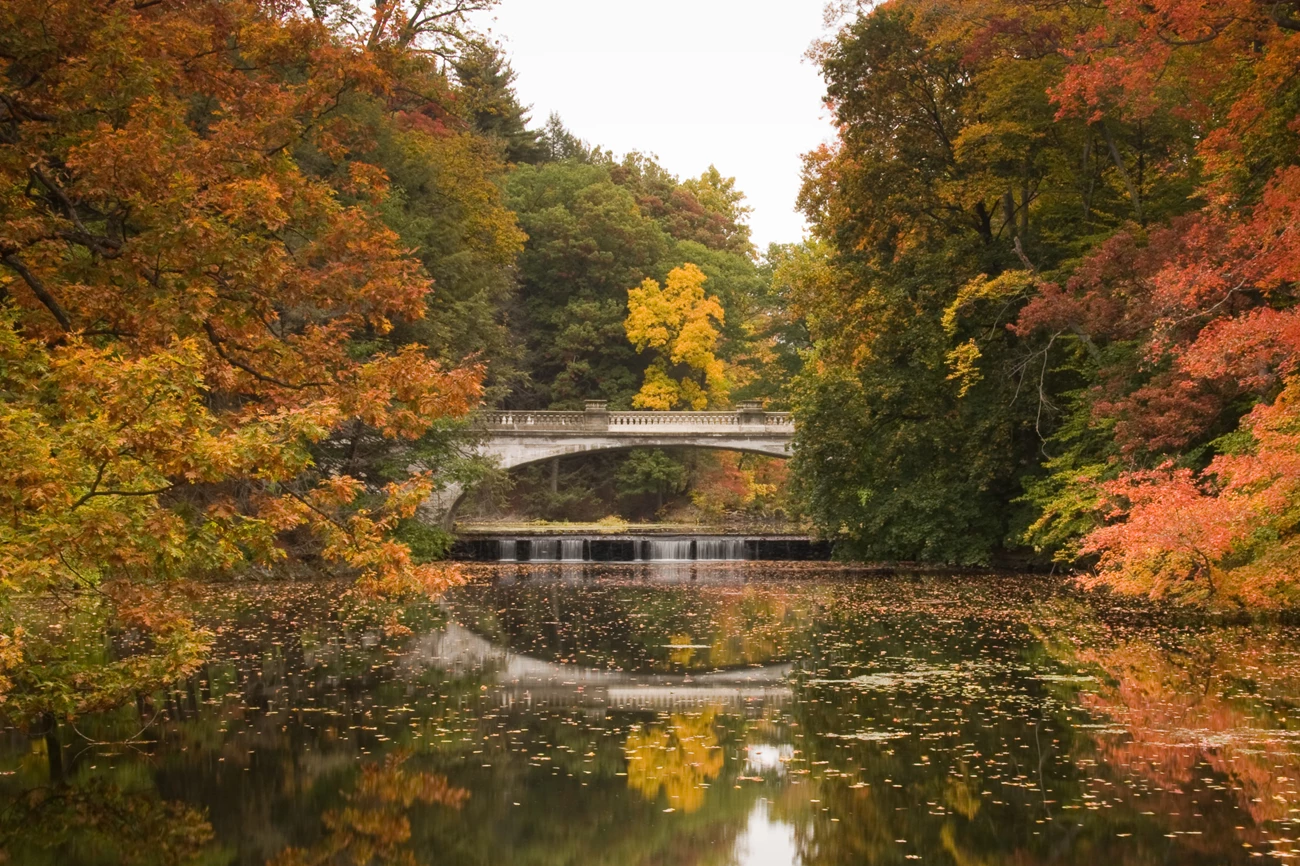
|
Last updated: September 18, 2020
